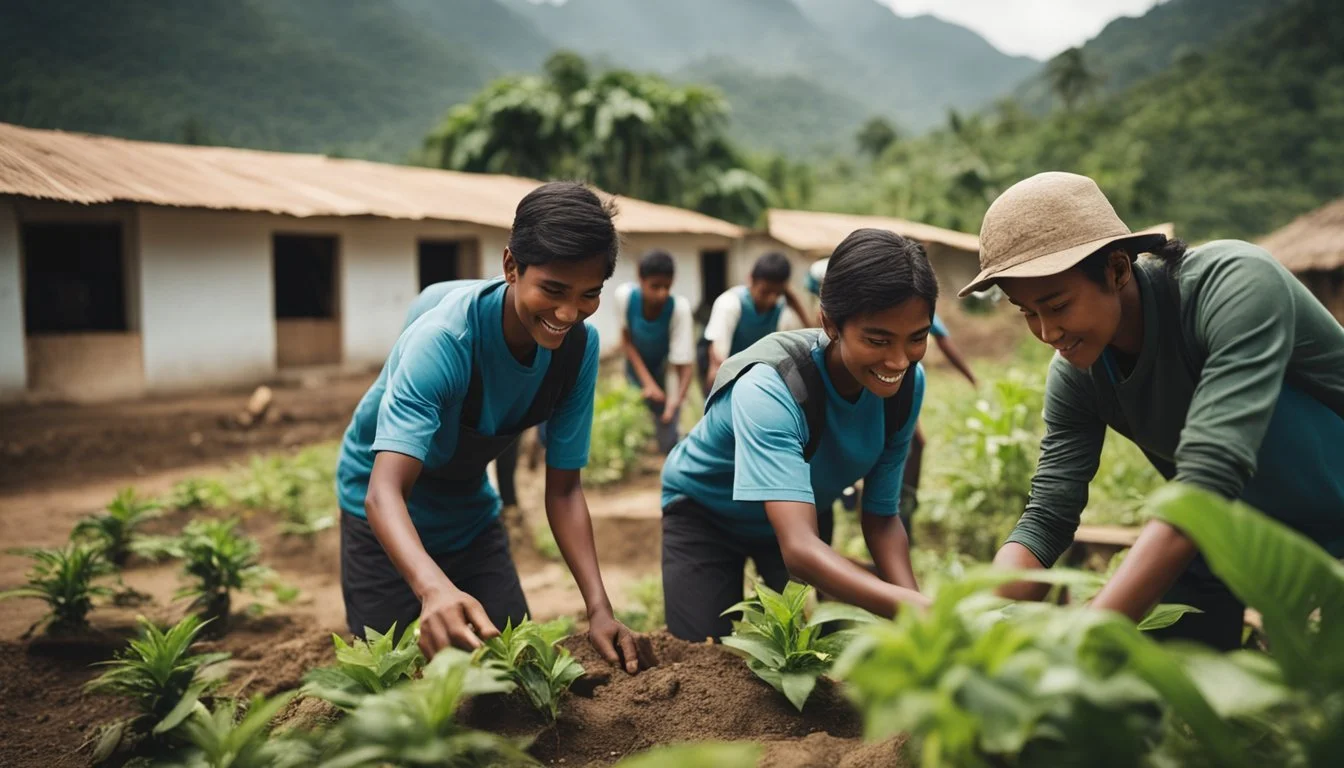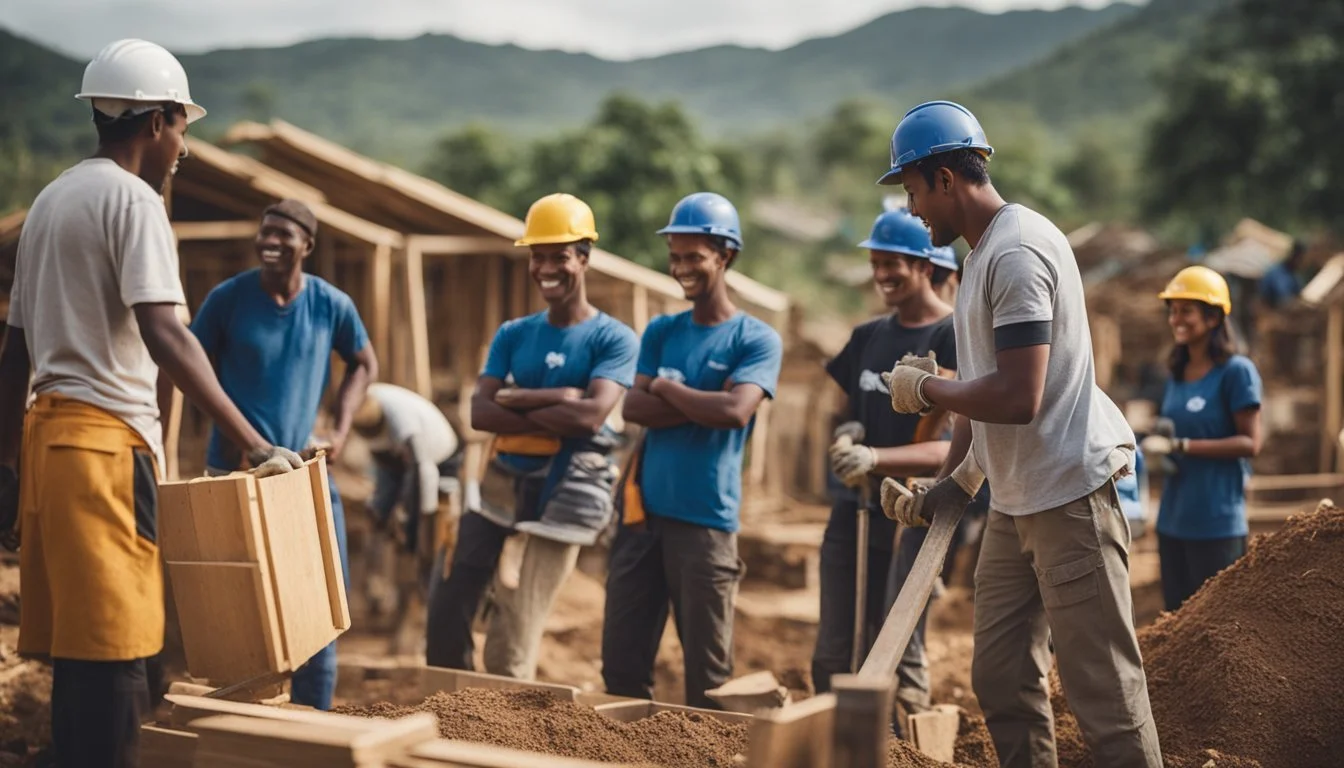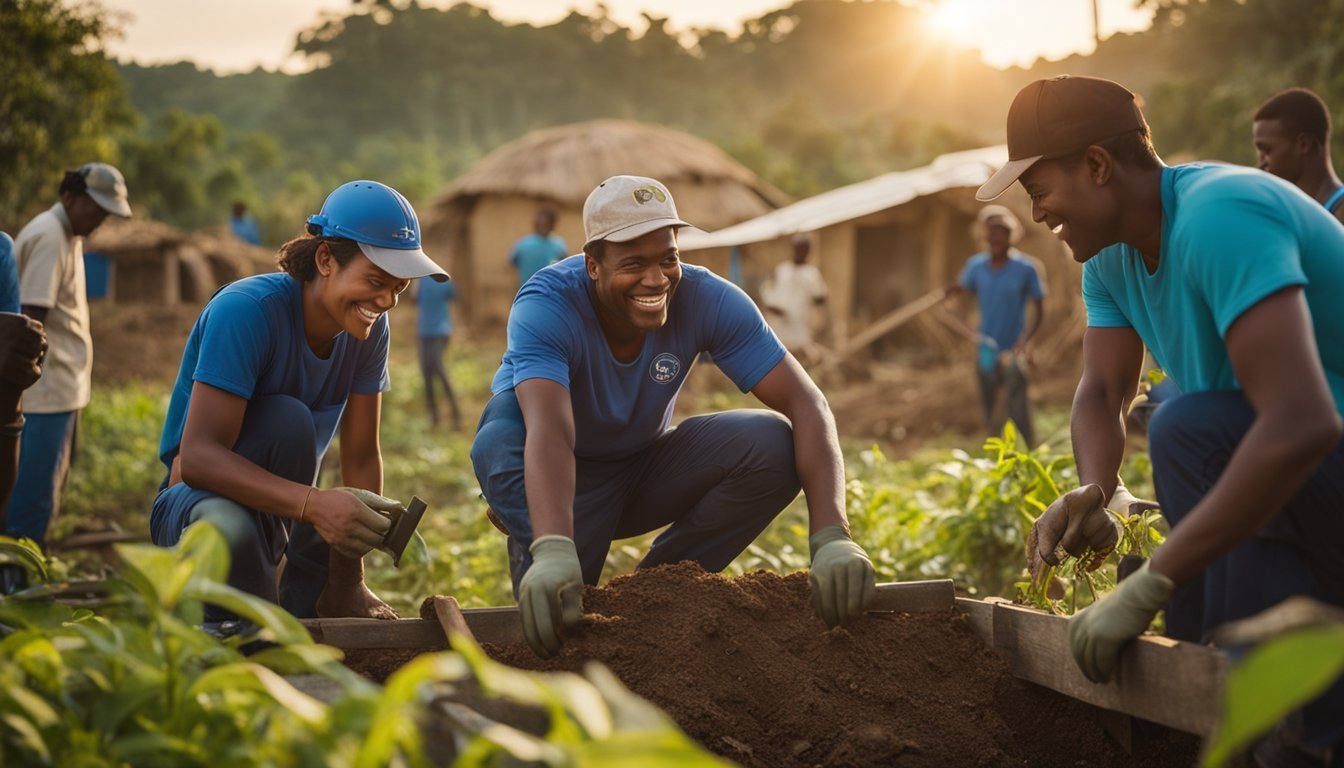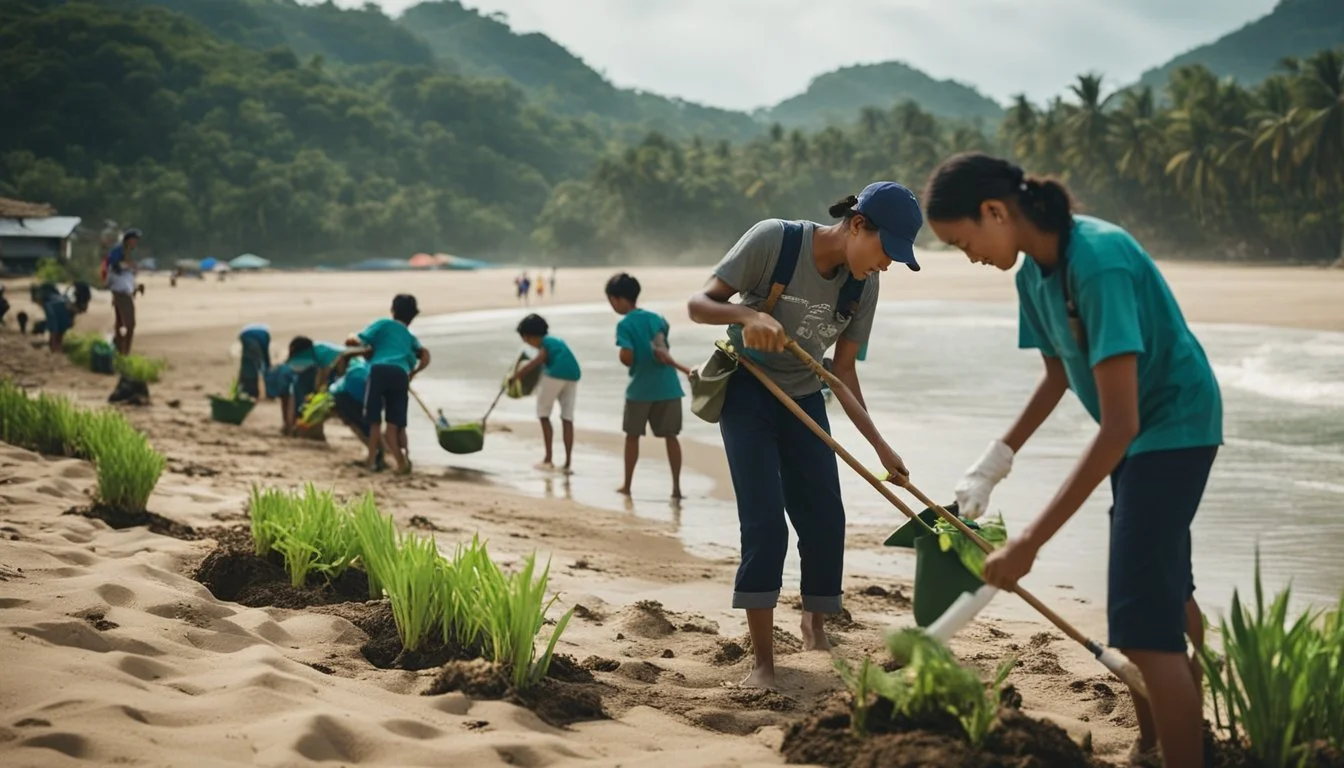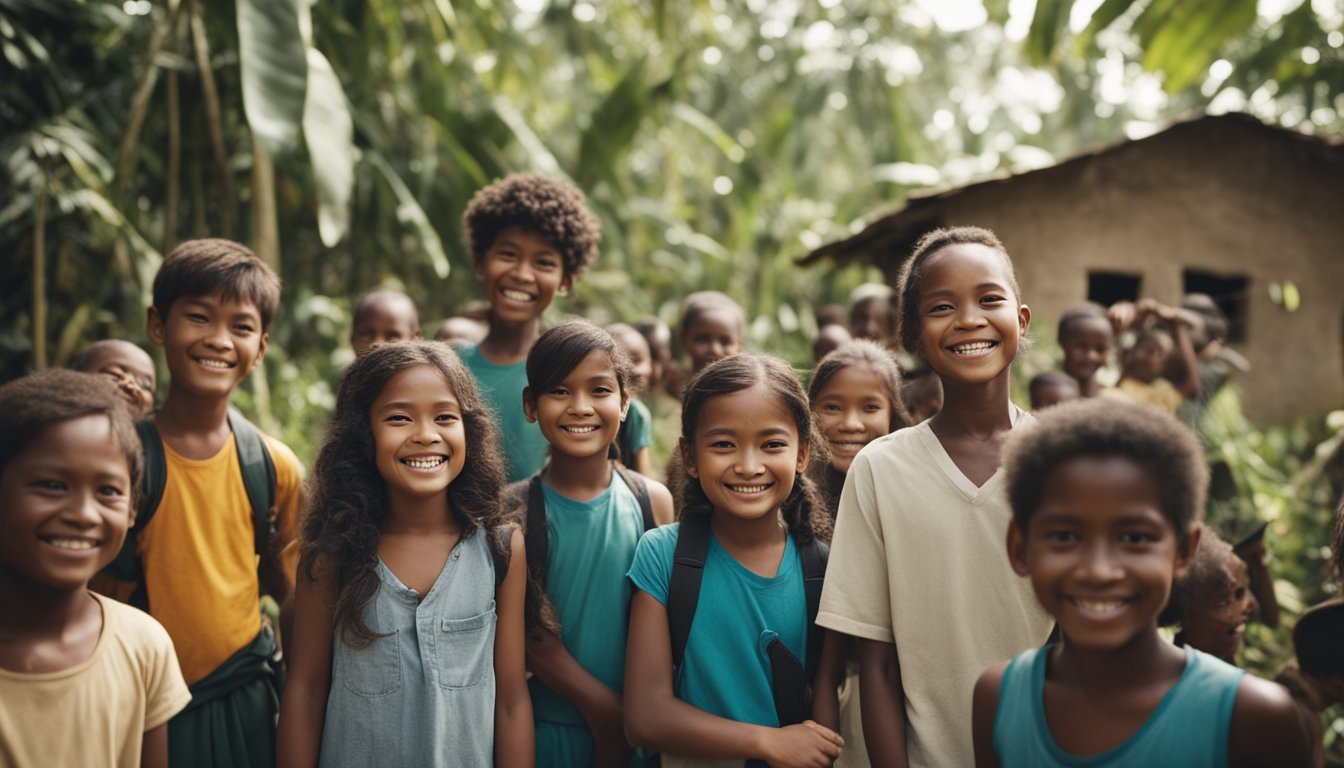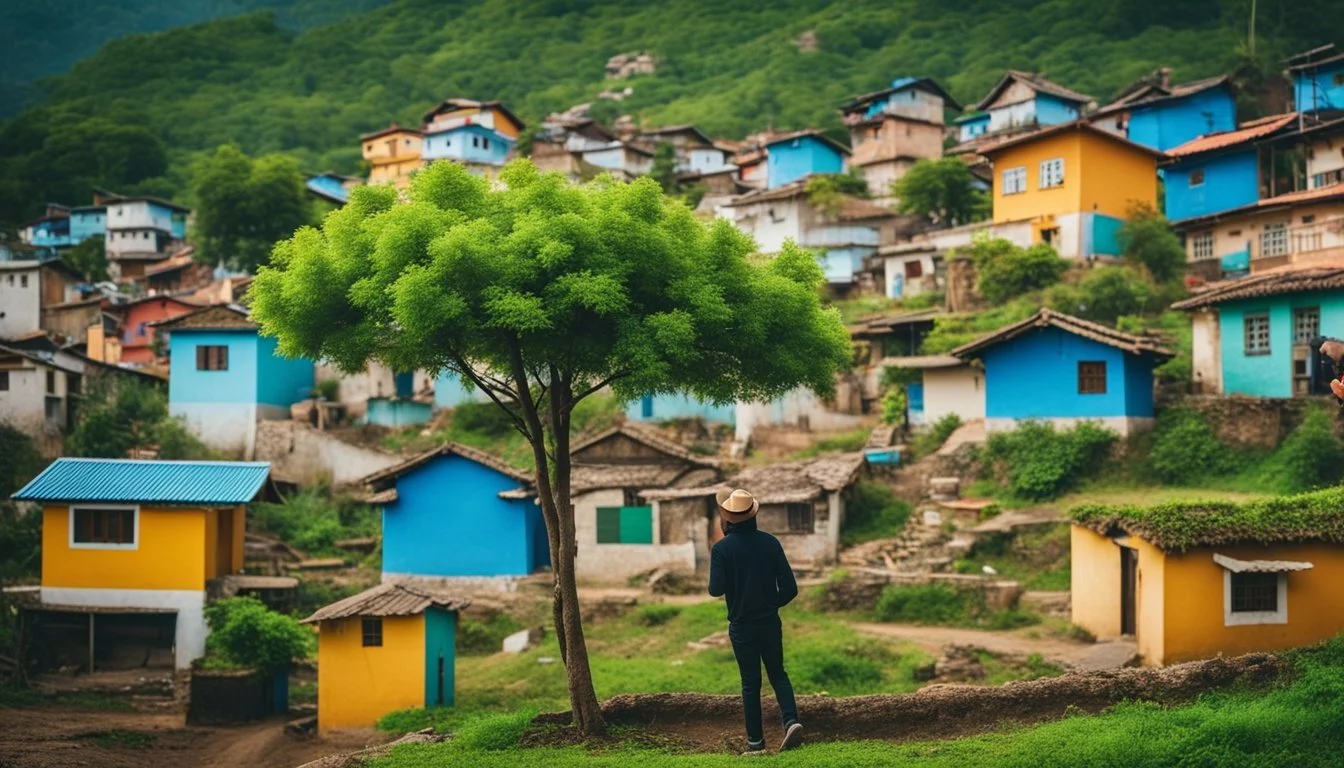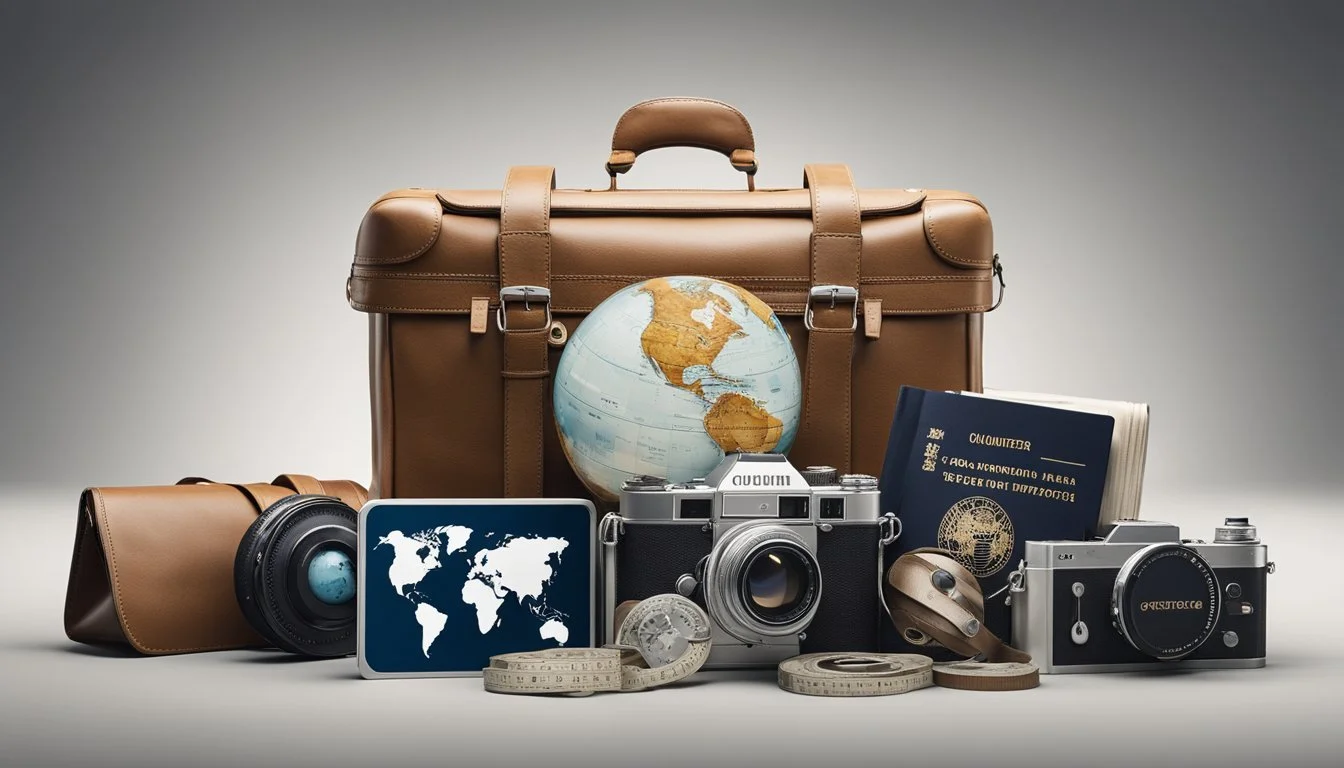21 Documentaries That Highlight Volunteer Travel
Inspiring Stories of Selfless Adventures
Volunteer travel is a powerful way to combine the thrill of exploration with the meaningful impact of giving back to communities around the world. Documentaries have become a popular medium to capture the essence of these experiences, providing viewers with an intimate look at the challenges and rewards of volunteering abroad.
These films not only inspire future travelers but also shed light on the diverse needs and cultural intricacies of host communities. By watching these documentaries, individuals can gain a deeper appreciation for the global volunteer movement and the many ways it can foster empathy and change.
1) The Human Element (2018)
"The Human Element" (2018) explores the impact of human activity on the natural elements of earth, air, water, and fire.
Environmental photographer James Balog leads this documentary, focusing on the lives of Americans on the front lines of climate change.
The film captures the interplay between humans and nature with compelling visuals and heartfelt storytelling.
By highlighting personal stories, it encourages viewers to re-evaluate their relationship with the natural world.
More details can be found on IMDb.
2) Living on One Dollar (2013)
"Living on One Dollar" is a documentary film released in 2013. It follows four young friends—Chris Temple, Zach Ingrasci, Sean Leonard, and Ryan Christofferson—as they embark on a journey to live on just one dollar a day for two months in rural Guatemala.
The documentary sheds light on the challenges of extreme poverty. The protagonists face hunger, illness, and the harsh realities of living without basic amenities. Despite these struggles, they also encounter the inspiring resilience and strength of the local community.
The film emphasizes the impact of microcredit and how small financial interventions can bring significant changes in impoverished communities. This aspect demonstrates the potential of microfinance in providing a path out of poverty.
For those interested in understanding the stark realities of poverty and the potential solutions, "Living on One Dollar" offers valuable insights. It is a compelling watch for anyone interested in volunteer travel and humanitarian efforts.
3) Blood Brother (2013)
"Blood Brother" centers on Rocky Braat, a young man with a challenging past who chose to travel through India. During his journey, he encountered a group of HIV-positive children living in an orphanage. This chance meeting led him to make the life-changing decision to stay and dedicate his life to helping them.
Directed by Steve Hoover, this documentary provides an intimate look at Rocky’s experiences and his profound connections with the children. It explores themes of love, sacrifice, and what it means to find a true calling. The film sheds light on the harsh realities faced by those affected by HIV, especially children in underprivileged areas.
Rocky’s transformation from disillusioned tourist to devoted caregiver is deeply moving. The documentary also highlights the emotional and physical challenges he faces while living in India. The portrayal is raw and heartfelt, capturing moments of joy, struggle, and unwavering commitment.
For more information, you can visit IMDb.
4) Poverty, Inc. (2014)
"Poverty, Inc." is a documentary that scrutinizes the charity industry and its impact on poverty-stricken regions. Directed by Michael Matheson Miller, this film explores the unintended consequences of foreign aid and asks if it inadvertently hampers true development.
The documentary features over 200 interviews conducted in 20 countries. It investigates various facets of charity, from TOMS Shoes to international adoptions, and highlights the complex relationship between aid and poverty.
"Poverty, Inc." proposes that fostering local entrepreneurship could be a more sustainable solution to alleviate poverty. It challenges conventional perceptions of charity and emphasizes the importance of allowing communities to build their own economic independence.
For those interested in the deeper intricacies of global charity and its effects, "Poverty, Inc." offers a critical perspective. It is a thought-provoking watch for anyone engaged in volunteer travel or international aid work.
Find more information about "Poverty, Inc." on Wikipedia.
5) Born Into Brothels (2004)
"Born Into Brothels" is a documentary directed by Zana Briski and Ross Kauffman.
The film chronicles the lives of children born to prostitutes in the red-light district of Sonagachi, Kolkata. Briski, a New York-based photographer, begins teaching photography to these children, offering them a chance to see life through a different lens.
This compelling documentary delves into the harsh realities faced by these children. It highlights the limited options available to them and the societal pressures they endure. The children's photographs provide a poignant insight into their daily lives and struggles.
"Born Into Brothels" received critical acclaim, winning the Academy Award for Best Documentary Feature in 2005. The film's impact extends beyond storytelling, as it led to the establishment of the non-profit foundation Kids With Cameras, aimed at empowering marginalized children through photography.
To learn more about "Born Into Brothels," visit the Wikipedia page.
6) Give a Damn?
"Give a Damn?" (2012) follows three friends—Robbie, Dan, and Tom—as they embark on a journey to understand extreme poverty. Their travels take them through various countries in Africa, where they engage in volunteer work and immerse themselves in the local communities.
The film aims to raise awareness about global poverty and challenges viewers to consider how they can make a difference. Throughout their journey, the friends confront harsh realities and learn the complexities of poverty and development.
The documentary illustrates the emotional and physical toll of their experiences. It also raises questions about the efficacy of short-term volunteer efforts and the importance of sustainable, long-term solutions.
"Give a Damn?" resonates with audiences by prompting them to reflect on their own privileges and responsibilities. The film effectively uses personal stories to convey broader messages about global inequities.
7) The White Savior Complex
Documentaries like "The White Savior Complex: The Dark Side of Volunteering" (2020) examine the damaging effects of volunteerism rooted in a savior mentality. The film delves into how volunteers, predominantly from Western countries, often perceive themselves as rescuers of marginalized communities, leading to harmful consequences. IMDB
"How the White Savior Complex Impacts Global Development" (2023) investigates the real-world impact of this phenomenon. It offers insight into the ways well-meaning volunteer efforts can undermine local initiatives and perpetuate dependency. Wikipedia
The HBO documentary series "Savior Complex" (2024) shines a spotlight on Renée Bach, a missionary whose work in Uganda sparked controversy. The series critically examines the intentions and outcomes of her actions, providing a nuanced view of volunteerism gone wrong. IMDB
8) Surfing for Change: J Bay Nuclear Plant (2011)
"Surfing for Change: J Bay Nuclear Plant" delves into the environmental risks posed by a proposed nuclear power plant at Jeffreys Bay, South Africa.
The film is the work of pro surfer and youth activist Kyle Thiermann. Known for his passionate advocacy, Thiermann highlights the potential ecological impacts on the pristine coastal area.
Interviews with local residents, environmentalists, and fellow surfers provide multiple perspectives on the controversy.
The film also features surfing icons like Kelly Slater, drawing attention to the cause from the broader surfing community.
Filmed in a stunning setting, the documentary uses visual storytelling to underscore the beauty at risk.
Viewers gain insight into activism through the lens of surfing culture, making complex issues more accessible.
9) Not Business As Usual (2014)
"Not Business As Usual" explores the evolving landscape of capitalism with a focus on conscious capitalism. The documentary sheds light on the unintended consequences of traditional business models that prioritize profit over everything else.
The film features stories of local entrepreneurs who strive to bring humanity back into business. These innovators challenge the status quo by integrating social and environmental responsibility into their business practices.
Directed by Lawrence Le Lam and Rik Klingle-Watt, "Not Business As Usual" highlights the need for a shift in how success is measured in the corporate world. It advocates for a more inclusive form of capitalism that benefits not just shareholders, but also society and the planet.
For more information about the film, visit its IMDb page.
10) The Starfish Throwers (2014)
"The Starfish Throwers" is a documentary directed by Jesse Roesler. It focuses on three individuals: a five-star chef, a twelve-year-old girl, and a retired schoolteacher. Each of them dedicates their time and effort to feed the poor, showcasing the power of individual acts in igniting a movement against hunger.
Award-winning chef Narayanan Krishnan leaves his prestigious job to hand-deliver fresh meals to those suffering from hunger in India. His efforts highlight the stark realities of the caste system and the impact of compassion-driven actions.
In another part of the world, a retired schoolteacher and a twelve-year-old girl also become key figures in this movement. Their collective stories illustrate how varied backgrounds and ages can unite for a common humanitarian cause.
The film offers a poignant look at their struggles and triumphs, emphasizing the profound changes that can result from personal dedication to volunteer work.
For more information on "The Starfish Throwers," visit the IMDb page.
11) Happy Documentary (2011)
"Happy" is an uplifting documentary that explores human happiness across various cultures and lifestyles. Directed by Roko Belic, this film travels from the swamps of Louisiana to the slums of Kolkata to find out what truly makes people happy.
The documentary combines real-life stories from around the world with interviews from leading scientists in the field of happiness research. It offers valuable insights into the factors that contribute to genuine, long-lasting happiness.
Rather than focusing on wealth or fame, "Happy" delves into community, relationships, and personal well-being. It challenges conventional beliefs and emphasizes the importance of mental and emotional health over material success.
For more detailed information about the film, visit the IMDB page.
12) Half the Sky: Turning Oppression into Opportunity for Women Worldwide (2012)
"Half the Sky: Turning Oppression into Opportunity for Women Worldwide" is a powerful documentary inspired by the book of the same name by Nicholas Kristof and Sheryl WuDunn.
The film explores the harsh realities faced by women in the developing world, highlighting issues such as gender-based violence, sex trafficking, and lack of education.
This documentary combines personal stories with broader contexts, emphasizing the resilience and strength of women fighting for their rights.
It takes viewers on a journey through countries like Cambodia, Vietnam, and Kenya, showcasing various grassroots initiatives and volunteer efforts that aim to empower women.
The film also features interviews with activists and organizations working to make a difference on the ground, demonstrating the impact of their work.
This documentary is a call to action, urging viewers to get involved in the global movement to support women's rights and equality.
For more information on "Half the Sky: Turning Oppression into Opportunity for Women Worldwide," visit Wikipedia.
13) On the Way to School (2013)
"On the Way to School" is a compelling documentary directed by Pascal Plisson. This film follows the arduous journeys of four children—Jackson, Zahira, Samuel, and Carlito—as they make their way to school from distant and challenging locales.
Jackson walks 15 kilometers through the African Savanna, carefully navigating around wild animals. Zahira, along with her friends, traverses the Atlas Mountains in Morocco on foot. Samuel, who uses a wheelchair, faces the remarkably challenging terrain to reach school.
Carlito travels great distances over treacherous territory. Their stories exemplify the lengths to which some children go to get access to education, displaying remarkable resilience and determination.
This documentary won the 2014 César Award for Best Documentary. It serves as a poignant reminder of the privileges often taken for granted by those with easier access to education.
For more information, you can visit IMDb.
14) Hotel Rwanda (2004)
"Hotel Rwanda" is a 2004 docudrama film directed by Terry George. The movie stars Don Cheadle as Paul Rusesabagina, a hotel manager who shelters over a thousand refugees during the Rwandan genocide.
The film powerfully illustrates the brutality of the 1994 genocide against the Tutsi and the humanitarian efforts within the chaos.
The story highlights the extraordinary courage and compassion of Rusesabagina. His actions saved countless lives, offering viewers a compelling reason to understand and remember this tragic chapter of history.
"Hotel Rwanda" serves as both a historical documentation and a testament to human resilience. Through its narrative, viewers gain insight into the devastating effects of ethnic violence and the importance of individual bravery.
For more information, visit the Wikipedia page on Hotel Rwanda.
15) A Small Act (2010)
"A Small Act" highlights the extraordinary impact of a modest scholarship on a Kenyan boy named Chris Mburu. Chris lived in a rural village, and his education was funded by a Swedish woman, Hilde Back, whom he had never met. This sponsorship was just $15 a month but made a world of difference for Chris.
Chris Mburu went on to attend the University of Nairobi and later graduated from Harvard Law School. He now serves as a United Nations Human Rights Commissioner. The film documents his quest to find and thank the woman who changed his life with her small but significant act.
Directed by Jennifer Arnold, the documentary emphasizes how even the smallest gestures of support can have far-reaching effects. The film not only shares Chris’s personal journey but also encourages viewers to consider the potential impact of their own acts of kindness and generosity.
For more information about the film, visit Wikipedia.
16) Girl Rising (2013)
"Girl Rising" is a compelling documentary that underscores the power of education in transforming the lives of girls around the world. It features the stories of nine girls from different countries who face significant barriers to education.
Nasro from Somalia is one such girl, living in one of the world's largest refugee camps, Dadaab. Despite daily dangers and scarce resources, she strives for education and a better future.
The film also brings to light the stories of girls from countries like India, Haiti, and Nepal. Each narrative illustrates the challenges they face, and their incredible resilience and determination.
"Girl Rising" combines stories by celebrated writers with voices from renowned actresses such as Meryl Streep and Salma Hayek. The documentary highlights the critical role of education in breaking the cycle of poverty and empowering young girls to change their communities.
For more information on "Girl Rising," visit IMDb.
17) American Winter (2013)
"American Winter", released in 2013, is a poignant documentary that shines a light on the struggles of eight families affected by the economic crisis. Directed by the Gantz Brothers, this film offers an intimate look at the financial hardship many Americans face.
The documentary mixes personal stories with hard facts to present an unflinching view of economic instability. Viewers are given a snapshot of these families' lives during one winter in a major American city.
"American Winter" premiered on HBO and received significant recognition. It was nominated for the 35th Annual News & Documentary Emmy Award and won several awards, including Best Documentary Feature at the 36th Portland International Film Festival.
The film serves as a stark reminder of the precariousness of the US economy and underscores the importance of social safety nets.
For more information, visit IMDb.
18) An Inconvenient Sequel: Truth to Power (2017)
"An Inconvenient Sequel: Truth to Power" is a documentary that continues the work of former United States Vice President Al Gore. Released in 2017, it follows his ongoing efforts to combat climate change. The film documents his travels and attempts to influence global environmental policy.
Al Gore's journey takes him around the world as he trains a new generation of climate advocates. His mission underscores the urgency of transitioning to renewable energy sources. The documentary includes footage of natural disasters and other climate-related events to illustrate the consequences of inaction.
The film emphasizes the progress made since the release of its predecessor, "An Inconvenient Truth" in 2006. It also highlights the challenges that persist in the fight against climate change. For more details, visit IMDB.
19) Bag It (2010)
"Bag It" is a compelling documentary that examines the environmental impact of plastic usage. The film follows Jeb Berrier, an average American, who takes a stand against plastic bags and begins exploring broader issues related to plastics.
Directed by Suzan Beraza, "Bag It" highlights the production, use, and disposal of plastic, emphasizing its harmful effects on wildlife, ecosystems, and human health. The documentary addresses how pervasive plastics are in everyday life and encourages viewers to consider sustainable alternatives.
This film is both informative and engaging, making it suitable for audiences of all ages. It has been well-received for its ability to break down complex environmental issues into understandable segments, making it an effective educational tool.
"Bag It" received a 4.5-star rating out of 6 on Films for the Earth and has been screened internationally, including on National Public Television. By offering smart solutions and alternatives, the documentary inspires viewers to take action in reducing their plastic consumption.
For more information on "Bag It," visit its Wikipedia page.
20) Umoja: No Men Allowed (2010)
"Umoja: No Men Allowed" is a documentary that highlights the inspiring story of the Umoja village in Northern Kenya. Directed by Elizabeth Tadic, the film captures the resilience and courage of Samburu women who formed a women-only village to escape oppressive patriarchal norms.
The film delves into the history of these women, many of whom reported sexual violence by British soldiers from 1970 to 2003. This grim past led them to create a sanctuary where women could live freely and safely, fostering a community built on unity and mutual support.
As the village grew, Umoja became a symbol of women's empowerment, attracting global attention and inspiring nearby communities. Notably, the village has influenced neighboring areas to grant women rights previously denied to them, such as property ownership.
With a runtime of 32 minutes, "Umoja: No Men Allowed" offers a brief yet powerful glimpse into the transformative power of female solidarity. The documentary has garnered several awards, underlining its impact and importance in promoting human rights and gender equality.
For more information on the film, visit the Wikipedia page.
21) The Elephant Whisperer (2022)
"The Elephant Whisperer" is a short documentary that explores the life of an indigenous couple, Bomman and Bellie, in South India as they care for an orphaned baby elephant named Raghu. The film showcases the profound bond between humans and animals, highlighting the dedicated efforts to nurture and protect orphaned wildlife.
Set in the Theppakadu Elephant Camp inside the Mudumulai Tiger Reserve in Tamil Nadu, the visuals provide stunning insights into the lush landscapes and the daily lives of the caretakers. This environment plays a critical role in the rehabilitation and emotional growth of the orphaned elephant.
The documentary emphasizes the importance of conservation and the human-animal connection. The couple's devotion turns caretaking into a labor of love, presenting a unique family dynamic formed between the humans and the elephant.
"The Elephant Whisperer" won an Oscar for Best Documentary Short Film, further underscoring its impact and storytelling excellence. The film was released on Netflix and has been widely acclaimed for its heartfelt narrative and visual beauty.
For more information, visit the Wikipedia page or the IMDb page.
Understanding Volunteer Travel
Volunteer travel, or voluntourism, combines travel with volunteer work. It allows travelers to contribute positively to the communities they visit while experiencing new cultures and environments.
Definition and Purpose
Volunteer travel, also known as voluntourism, merges traveling with volunteer activities. Volunteers participate in various projects, such as teaching, environmental conservation, or community development. Voluntourism aims to provide meaningful assistance to local communities while offering travelers a deeper cultural immersion. The primary objective is to create a win-win situation where both the traveler and the host community benefit.
Types of Volunteer Travel
There are several types of volunteer travel, each catering to different interests and skills. Environmental conservation projects engage volunteers in activities such as wildlife preservation, reforestation, and marine conservation. Community development programs typically involve education, healthcare, and infrastructure improvement. Another type includes cultural exchange programs, where volunteers might work in local schools or community centers. Each type offers unique experiences and opportunities for making a positive impact.
The Impact on Local Communities
Volunteer travel can have profound effects on local communities. Successful projects often lead to improved local services and infrastructure, enhanced educational opportunities, and better environmental conservation efforts. However, it is essential to ensure that the volunteer activities align with the actual needs of the community. Poorly managed voluntourism can sometimes cause more harm than good. Addressing the community's needs and involving local stakeholders in planning are crucial for maximizing positive outcomes.
Choosing the Right Volunteer Program
Selecting the right volunteer program involves thorough research, aligning the project with your personal interests, and considering your budget and funding. Each of these factors plays a crucial role in ensuring a meaningful and impactful experience.
Researching Organizations
The first step in choosing a volunteer program is to research various organizations. Look for those with a strong reputation and positive reviews. Websites like GuideStar and Charity Navigator can be useful for evaluating the credibility of non-profit organizations.
It's also important to check if they have established partnerships within the communities they serve. This can often be a sign of sustainable and respectful involvement. Transparency in their operations, including how funds are used, is also a critical factor to consider.
Aligning with Personal Interests
Aligning the volunteer program with personal interests and skills is key to a fulfilling experience. Reflect on what you're passionate about—be it education, healthcare, environmental conservation, or another field. This helps ensure a deeper connection and commitment to the work.
Skills also play an important role. Consider what you can offer and how it aligns with the needs of the community you'll be serving. This not only enhances the impact of your work but also leads to personal growth and satisfaction.
Budget and Funding Considerations
Budget is a significant consideration when choosing a volunteer program. Costs can vary widely, including program fees, travel expenses, and living costs. Some programs may charge fees that cover your accommodation, food, and other logistics, while others might expect you to cover these costs independently.
Look into potential funding sources such as scholarships, grants, or crowdfunding. Some organizations offer subsidized programs or have partnerships that can reduce costs. Planning and budgeting ahead can prevent financial stress and ensure you can focus on volunteering.
By addressing these key areas, potential volunteers can find programs that not only align with their values and skills but also fit within their financial means, ensuring a rewarding and impactful experience.
Preparing for Volunteer Travel
Embarking on a volunteer travel experience requires thoughtful preparation. Travelers must prioritize cultural sensitivity, ensure their health and safety, and pack appropriately for their journey.
Cultural Sensitivity and Awareness
Understanding local customs is vital. Researching the destination’s cultural norms helps in avoiding inadvertent offenses. Learning a few phrases in the native language can build rapport with locals. Respect for dress codes and religious practices is essential. Interaction with community members should be approached with humility and openness, acknowledging that volunteers are guests in their community.
Health and Safety Precautions
Staying healthy abroad is a priority. Check if vaccinations are needed well in advance and ensure all routine immunizations are up to date. Carry a basic medical kit, including prescriptions and over-the-counter medicines. Register with your embassy and have a reliable emergency contact. Familiarize yourself with the local healthcare facilities and emergency services.
Packing Essentials
Packing wisely can make a significant difference. Clothing should be appropriate for the local climate and cultural expectations. A sturdy pair of shoes, a multi-purpose tool, and reusable water bottles are invaluable. Consider packing lightweight, quick-dry fabrics. Carry all necessary documents, such as passports and visas, in a waterproof folder. Don’t forget items like sunscreen, insect repellent, and a hat for protection against the elements.

